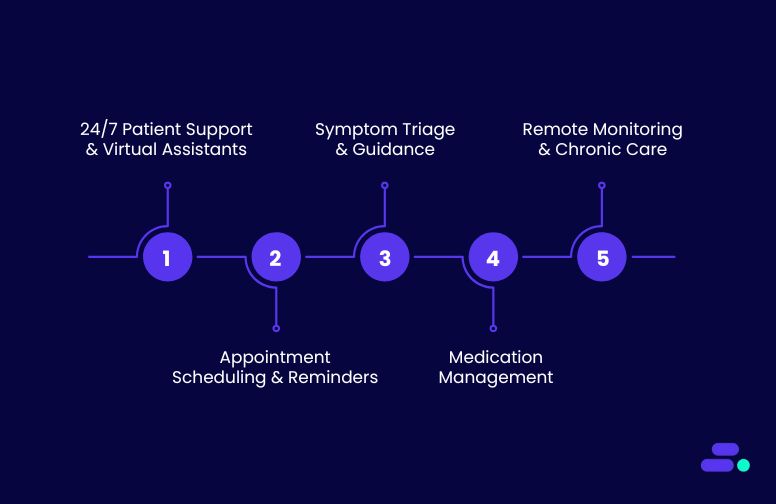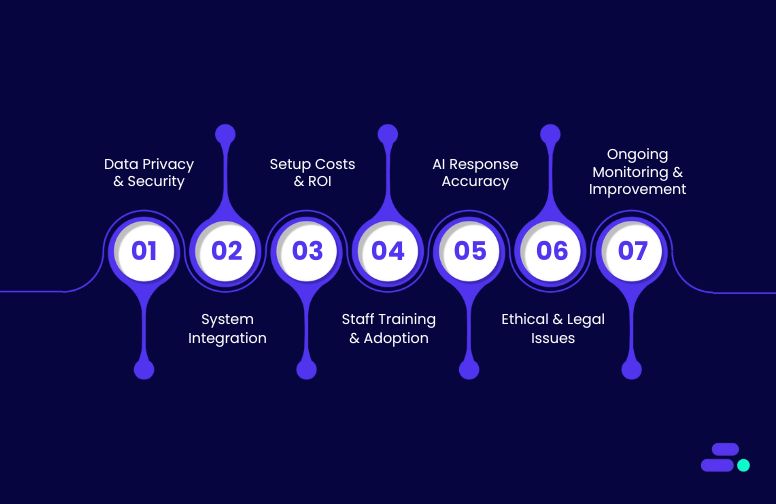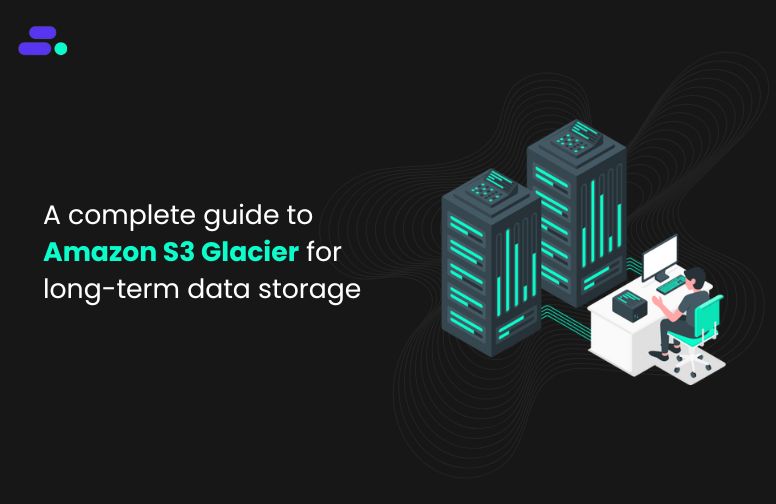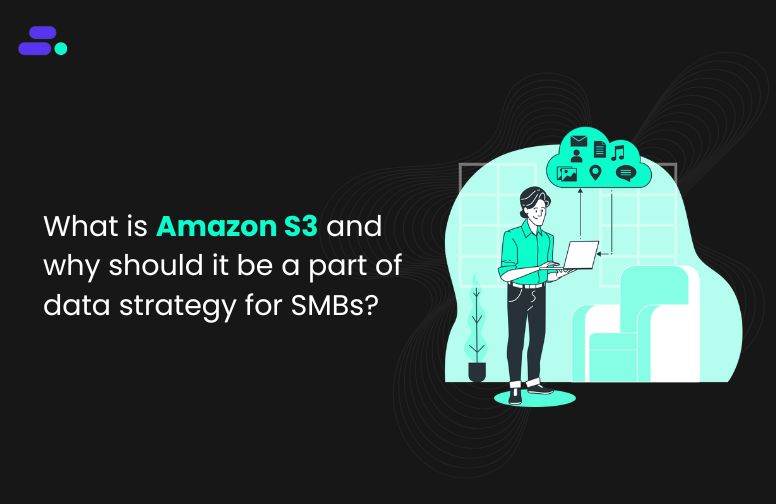This is a div block with a Webflow interaction that will be triggered when the heading is in the view.

Modernize your cloud. Maximize business impact.
As data volumes continue to grow exponentially, small and medium-sized businesses (SMBs) face multiple challenges in managing, processing, and analyzing their data efficiently.
A well-structured data lake on AWS enables businesses to consolidate structured, semi-structured, and unstructured data in one location, making it easier to extract insights and inform decisions.
According to IDC, the global datasphere is projected to reach 163 zettabytes by the end of 2025, highlighting the urgent need for scalable, cloud-first data strategies.
This blog explores how SMBs can build effective ETL (Extract, Transform, Load) processes using AWS services and modernize their data infrastructure for improved performance and insight.
Key takeaways
- Importance of ETL pipelines for SMBs: ETL pipelines are crucial for SMBs to integrate and transform data within an AWS data lake.
- AWS services powering ETL workflows: Amazon Glue, Amazon S3, Amazon Athena, and Amazon Kinesis enable scalable, secure, and cost-efficient ETL workflows.
- Best practices for security and performance: Strong security measures, access control, and performance optimization are crucial to meet compliance requirements.
- Real-world ETL applications: Examples demonstrate how AWS-powered ETL supports diverse industries and handles varying data volumes effectively.
- Cloudtech’s role in ETL pipeline development: Cloudtech helps SMBs build tailored, reliable ETL pipelines that simplify cloud modernization and unlock valuable data insights.
What is ETL?
ETL stands for extract, transform, and load. It is a process used to combine data from multiple sources into a centralized storage environment, such as an AWS data lake.
Through a set of defined business rules, ETL helps clean, organize, and format raw data to make it usable for storage, analytics, and machine learning applications.
This process enables SMBs to achieve specific business intelligence objectives, including generating reports, creating dashboards, forecasting trends, and enhancing operational efficiency.
Why is ETL important for businesses?
Businesses and mostly SMBs typically manage structured and unstructured data from a variety of sources, including:
- Customer data from payment gateways and CRM platforms
- Inventory and operations data from vendor systems
- Sensor data from IoT devices
- Marketing data from social media and surveys
- Employee data from internal HR systems
Without a consistent process in place, this data remains siloed and difficult to use. ETL helps convert these individual datasets into a structured format that supports meaningful analysis and interpretation.
By utilizing AWS services, businesses can develop scalable ETL pipelines that enhance the accessibility and actionability of their data.
The evolution of ETL from legacy systems to cloud solutions
ETL (Extract, Transform, Load) has come a long way from its origins in structured, relational databases. Initially designed to convert transactional data into relational formats for analysis, early ETL processes were rigid and resource-intensive.
1. Traditional ETL
In traditional systems, data resided in transactional databases optimized for recording activities, rather than for analysis and reporting.
ETL tools helped transform and normalize this data into interconnected tables, enabling fundamental trend analysis through SQL queries. However, these systems struggled with data duplication, limited scalability, and inflexible formats.
2. Modern ETL
Today’s ETL is built for the cloud. Modern tools support real-time ingestion, unstructured data formats, and scalable architectures like data warehouses and data lakes.
- Data warehouses store structured data in optimized formats for fast querying and reporting.
- Data lakes accept structured, semi-structured, and unstructured data, supporting a wide range of analytics, including machine learning and real-time insights.
This evolution enables businesses to process more diverse data at higher speeds and scales, all while utilizing cost-efficient cloud-native tools like those offered by AWS.
How does ETL work?
At a high level, ETL moves raw data from various sources into a structured format for analysis. It helps businesses centralize, clean, and prepare data for better decision-making.
Here’s how ETL typically flows in a modern AWS environment:
- Extract: Pulls data from multiple sources, including databases, CRMs, IoT devices, APIs, and other data sources, into a centralized environment, such as Amazon S3.
- Transform: Converts, enriches, or restructures the extracted data. This could include cleaning up missing fields, formatting timestamps, or joining data sets using AWS Glue or Apache Spark.
- Load: Places the transformed data into a destination such as Amazon Redshift, a data warehouse, or back into S3 for analytics using services like Amazon Athena.
Together, these stages power modern data lakes on AWS, letting businesses analyze data in real-time, automate reporting, or feed machine learning workflows.
What are the design principles for ETL in AWS data lakes?

Designing ETL processes for AWS data lakes involves optimizing for scalability, fault tolerance, and real-time analytics. Key principles include utilizing AWS Glue for serverless orchestration, Amazon S3 for high-volume, durable storage, and ensuring efficient data transformation through Amazon Athena and AWS Lambda. An impactful design also focuses on cost control, security, and maintaining data lineage with automated workflows and minimal manual intervention.
- Event sourcing and processing within AWS services
Use event-driven architectures with AWS tools such as Amazon Kinesis or AWS Lambda. These services enable real-time data capture and processing, which keeps data current and workflows scalable without manual intervention.
- Storing data in open file formats for compatibility
Adopt open file formats like Apache Parquet or ORC. These formats improve interoperability across AWS analytics and machine learning services while optimizing storage costs and query performance.
- Ensuring performance optimization in ETL processes
Utilize AWS services such as AWS Glue and Amazon EMR for efficient data transformation. Techniques like data partitioning and compression help reduce processing time and minimize cloud costs.
- Incorporating data governance and access control
Maintain data security and compliance by using AWS IAM (Identity and Access Management), AWS Lake Formation, and encryption. These tools provide granular access control and protect sensitive information throughout the ETL pipeline.
By following these design principles, businesses can develop ETL processes that not only meet their current analytics needs but also scale as their data volume increases.
AWS services supporting ETL processes
AWS provides a suite of services that simplify ETL workflows and help SMBs build scalable, cost-effective data lakes. Here are the key AWS services supporting ETL processes:
1. Utilizing AWS Glue data catalog and crawlers
AWS Glue data catalog organizes metadata and makes data searchable across multiple sources. Glue crawlers automatically scan data in Amazon S3, updating the catalog to keep it current without manual effort.
2. Building ETL jobs with AWS Glue
AWS Glue provides a serverless environment for creating, scheduling, and monitoring ETL jobs. It supports data transformation using Apache Spark, enabling SMBs to clean and prepare data for analytics without managing infrastructure.
3. Integrating with Amazon Athena for query processing
Amazon Athena allows businesses to run standard SQL queries directly on data stored in Amazon S3. It works seamlessly with the Glue data catalog, enabling quick, ad hoc analysis without the need for complex data movement.
4. Using Amazon S3 for data storage
Amazon Simple Storage Service (S3) serves as the central repository for raw and processed data in a data lake. It offers durable, scalable, and cost-efficient storage, supporting multiple data formats and integration with other AWS analytics services.
Together, these AWS services form a comprehensive ETL ecosystem that enables SMBs to manage and analyze their data effectively.
Steps to construct ETL pipelines in AWS
The how-to approach to ETL pipeline construction using AWS services, with Cloudtech guiding businesses at every stage of the modernization journey.
1. Mapping structured and unstructured data sources
Begin by identifying all data sources, including structured sources like CRM and ERP systems, as well as unstructured sources such as social media, IoT devices, and customer feedback. This step ensures full data visibility and sets the foundation for effective integration.
2. Creating ingestion pipelines into object storage
Use services like AWS Glue or Amazon Kinesis to ingest real-time or batch data into Amazon S3. It serves as the central storage layer in a data lake, offering the flexibility to store data in raw, transformed, or enriched formats.
3. Developing ETL pipelines for data transformation
Once ingested, use AWS Glue to build and manage ETL workflows. This step involves cleaning, enriching, and structuring data to make it ready for analytics. AWS Glue supports Spark-based transformations, enabling efficient processing without manual provisioning.
4. Implementing ELT pipelines for analytics
In some use cases, it is more effective to load raw data into Amazon Redshift or query directly from S3 using Amazon Athena.
This approach, known as ELT (extract, load, transform), allows SMBs to analyze large volumes of data quickly without heavy transformation steps upfront.
Best practices for security and access control

Security and governance are essential parts of any ETL workflow, especially for SMBs that manage sensitive or regulated data. The following best practices help SMBs stay secure, compliant, and audit-ready from day one.
1. Ensuring data security and compliance
Use AWS Key Management Service (KMS) to encrypt data at rest and in transit, and apply policies that restrict access to encryption keys. Consider enabling Amazon Macie to automatically discover and classify sensitive data, such as personally identifiable information (PII).
For regulated industries like healthcare, ensure all data handling processes align with standards such as HIPAA, HITRUST, or GDPR. AWS Config can help enforce compliance by tracking changes to configurations and alerting when policies are violated.
2. Managing user access with AWS Identity and Access Management (IAM)
Create IAM policies based on the principle of least privilege, giving users only the permissions required to perform their tasks. Use IAM roles to grant temporary access for third-party tools or workflows without compromising long-term credentials.
For added security, enable multi-factor authentication (MFA) and use AWS Organizations to apply access boundaries across business units or teams.
3. Implementing effective monitoring and logging practices
Use AWS CloudTrail to log all API activity, and integrate Amazon CloudWatch for real-time metrics and automated alerts. Pair this with AWS GuardDuty to detect unexpected behavior or potential security threats, such as data exfiltration attempts or unusual API calls.
Logging and monitoring are particularly important for businesses working with sensitive healthcare data, where early detection of irregularities can prevent compliance issues or data breaches.
4. Auditing data access and changes regularly
Set up regular audits of who accessed what data and when. AWS Lake Formation offers fine-grained access control, enabling centralized permission tracking across services.
SMBs can use these insights to identify access anomalies, revoke outdated permissions, and prepare for internal or external audits.
5. Isolating environments using VPCs and security groups
Isolate ETL components across development, staging, and production environments using Amazon Virtual Private Cloud (VPC).
Apply security groups and network ACLs to control traffic between resources. This reduces the risk of accidental data exposure and ensures production data remains protected during testing or development.
By following these practices, SMBs can build trust into their data pipelines and reduce the likelihood of security incidents.
Also Read: 10 Best practices for building a scalable and secure AWS data lake for SMBs
Understanding theory is great, but seeing ETL in action through real-world examples helps solidify these concepts.
Real-world examples of ETL implementations
Looking at how leading companies use ETL pipelines on AWS offers practical insights for small and medium-sized businesses (SMBs) building their own data lakes. The tools and architecture may scale across business sizes, but the core principles remain consistent.
Sisense: Flexible, multi-source data integration
Business intelligence company Sisense built a data lake on AWS to handle multiple data sources and analytics tools.
Using Amazon S3, AWS Glue, and Amazon Redshift, they established ETL workflows that streamlined reporting and dashboard performance, demonstrating how AWS services can support diverse, evolving data needs.
IronSource: real-time, event-driven processing
To manage rapid growth, IronSource implemented a streaming ETL model using Amazon Kinesis and AWS Lambda.
This setup enabled them to handle real-time mobile interaction data efficiently. For SMBs dealing with high-frequency or time-sensitive data, this model offers a clear path to scalability.
SimilarWeb: scalable big data processing
SimilarWeb uses Amazon EMR and Amazon S3 to process vast amounts of digital traffic data daily. Their Spark-powered ETL workflows are optimized for high-volume transformation tasks, a strategy that suits SMBs looking to modernize legacy data systems while preparing for advanced analytics.
AWS partners, such as Cloudtech, work with multiple such SMB clients to implement similar AWS-based ETL architectures, helping them build scalable and cost-effective data lakes tailored to their growth and analytics goals.
Choosing tools and technologies for ETL processes
For SMBs building or modernizing a data lake on AWS, selecting the right tools is key to building efficient and scalable ETL workflows. The choice depends on business size, data complexity, and the need for real-time or batch processing.
1. Evaluating AWS Glue for data cataloging and ETL
AWS Glue provides a serverless environment for data cataloging, cleaning, and transformation. It integrates well with Amazon S3 and Redshift, supports Spark-based ETL jobs, and includes features like Glue Studio for visual pipeline creation.
For SMBs looking to avoid infrastructure management while keeping costs predictable, AWS Glue is a reliable and scalable option.
2. Considering Amazon Kinesis for real-time data processing
Amazon Kinesis is ideal for SMBs that rely on time-sensitive data from IoT devices, applications, or user interactions. It supports real-time ingestion and processing with low latency, enabling quicker decision-making and automation.
When paired with AWS Lambda or Glue streaming jobs, it supports dynamic ETL workflows without overcomplicating the architecture.
3. Assessing Upsolver for automated data workflows
Upsolver is an AWS-native tool that simplifies ETL and ELT pipelines by automating tasks like job orchestration, schema management, and error handling.
While third-party, it operates within the AWS ecosystem and is often considered by SMBs that want faster deployment times without building custom pipelines. Cloudtech helps evaluate when tools like Upsolver fit into the broader modernization roadmap.
Choosing the right mix of AWS services ensures that ETL workflows are not only efficient but also future-ready. AWS partners like Cloudtech support SMBs in assessing tools based on their use cases, guiding them toward solutions that align with their cost, scale, and performance needs.
How Cloudtech supports SMBs with ETL on AWS
Cloudtech is an advanced cloud modernization and AWS Tier Partner focused on helping SMBs build efficient ETL pipelines and data lakes on AWS. Cloudtech helps with:
- Data modernization: Upgrading data infrastructures for improved performance and analytics, helping businesses unlock more value from their information assets through Amazon Redshift implementation.
- Application modernization: Revamping legacy applications to become cloud-native and scalable, ensuring seamless integration with modern data warehouse architectures.
- Infrastructure and resiliency: Building secure, resilient cloud infrastructures that support business continuity and reduce vulnerability to disruptions through proper Amazon Redshift deployment and optimization.
- Generative artificial intelligence: Implementing AI-driven solutions that leverage Amazon Redshift's analytical capabilities to automate and optimize business processes.
Cloudtech simplifies the path to modern ETL, enabling SMBs to gain real-time insights, meet compliance standards, and grow confidently on AWS.
Conclusion
Cloudtech helps SMBs simplify complex data workflows, making cloud-based ETL accessible, reliable, and scalable.
Building efficient ETL pipelines is crucial for SMBs to utilize a data lake on AWS fully. By adopting AWS-native tools such as AWS Glue, Amazon S3, and Amazon Athena, businesses can simplify data processing while ensuring scalability, security, and cost control. Following best practices in data ingestion, transformation, and governance helps unlock actionable insights and supports better business decisions.
Cloudtech specializes in guiding SMBs through this cloud modernization journey. With expertise in AWS and a focus on SMB requirements, Cloudtech delivers customized ETL solutions that enhance data reliability and operational efficiency.
Partners like Cloudtech help to design and implement scalable, secure ETL pipelines on AWS tailored to your business goals. Reach out today to learn how Cloudtech can help improve your data strategy.
FAQs
1. What is an ETL pipeline?
ETL stands for extract, transform, and load. It is a process that collects data from multiple sources, cleans and organizes it, then loads it into a data repository such as a data lake or data warehouse for analysis.
2. Why are ETL pipelines important for SMBs?
ETL pipelines help SMBs consolidate diverse data sources into one platform, enabling better business insights, streamlined operations, and faster decision-making without managing complex infrastructure.
3. Which AWS services are commonly used for ETL?
Key AWS services include AWS Glue for data cataloging and transformation, Amazon S3 for data storage, Amazon Athena for querying data directly from S3, and Amazon Kinesis for real-time data ingestion.
4. How does Cloudtech help with ETL implementation?
Cloudtech supports SMBs in designing, building, and optimizing ETL pipelines using AWS-native tools. They provide tailored solutions with a focus on security, compliance, and performance, especially for healthcare and regulated industries.
5. Can ETL pipelines handle real-time data processing?
Yes, AWS services like Amazon Kinesis and AWS Glue Streaming support real-time data ingestion and transformation, enabling SMBs to act on data as it is generated.Conclusion

Get started on your cloud modernization journey today!
Let Cloudtech build a modern AWS infrastructure that’s right for your business.

















